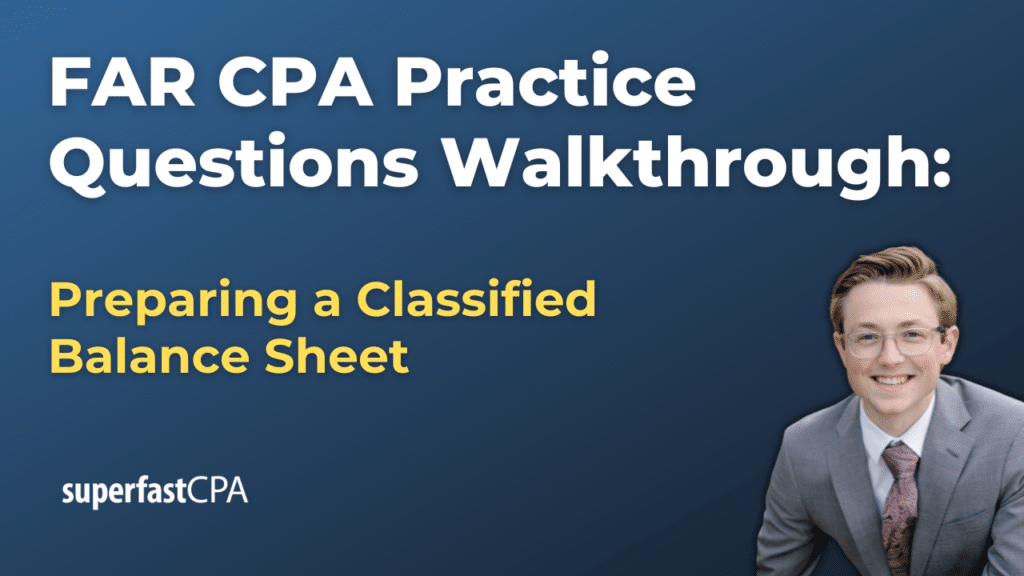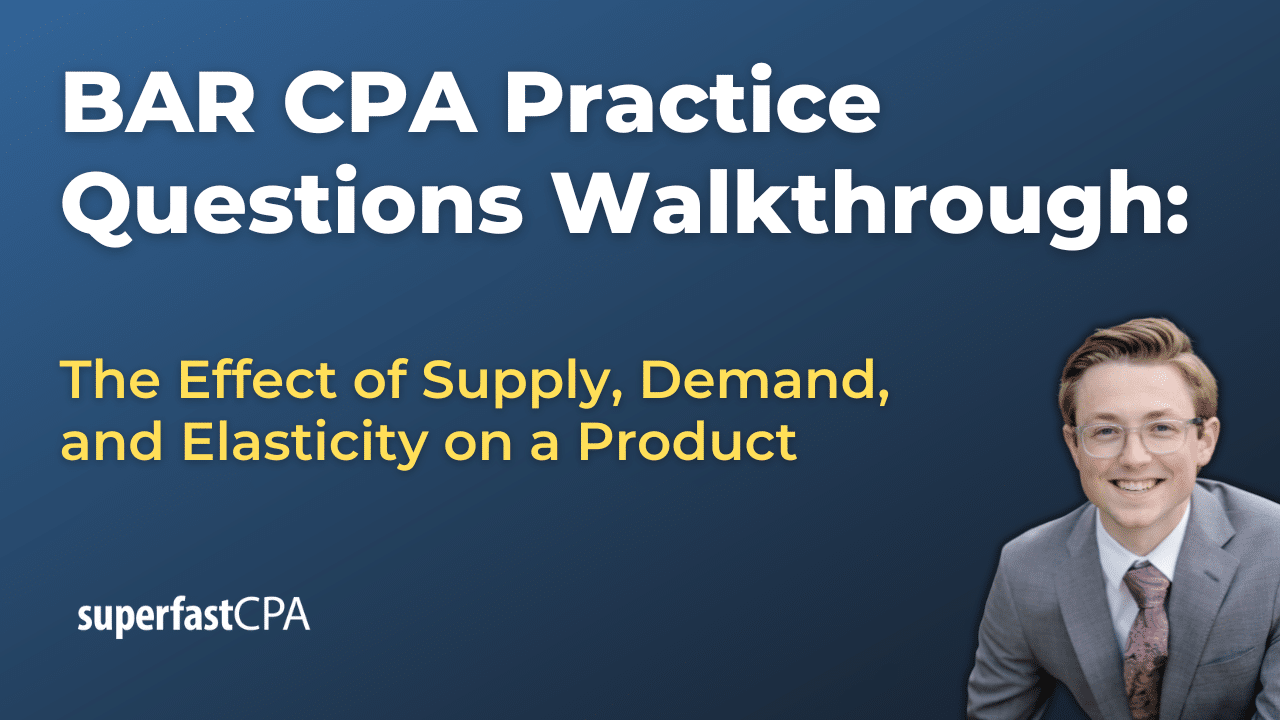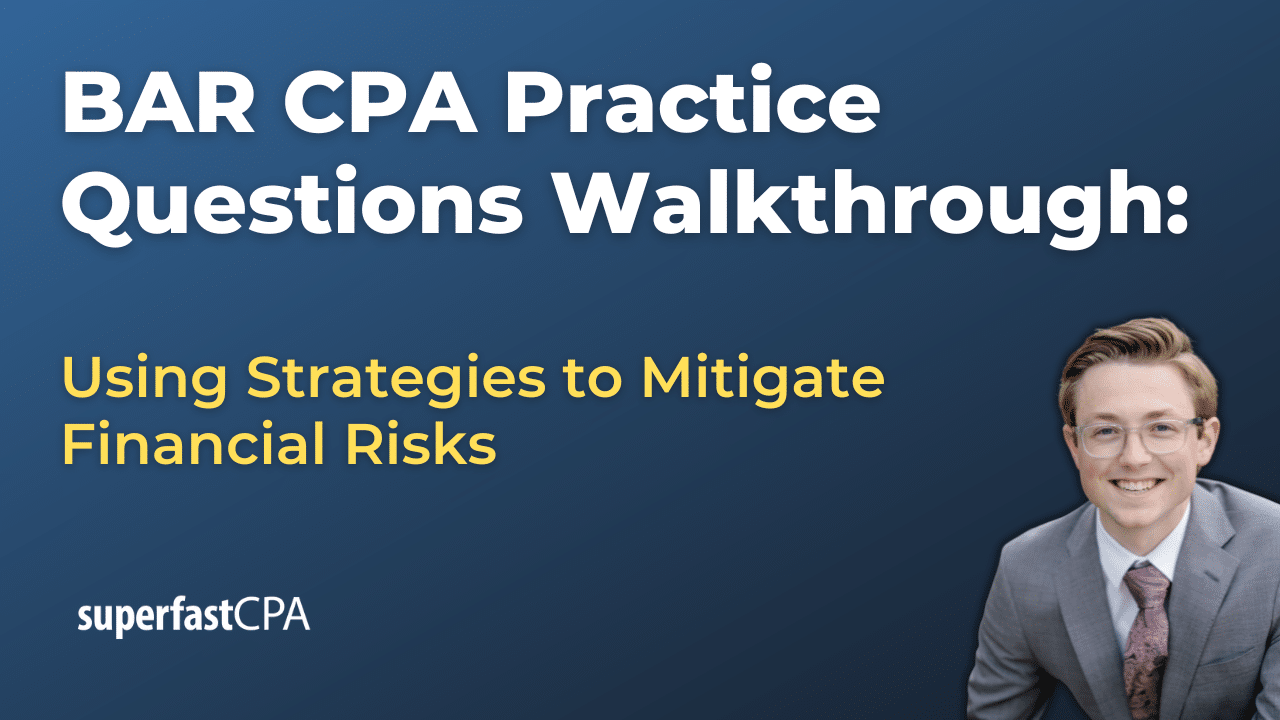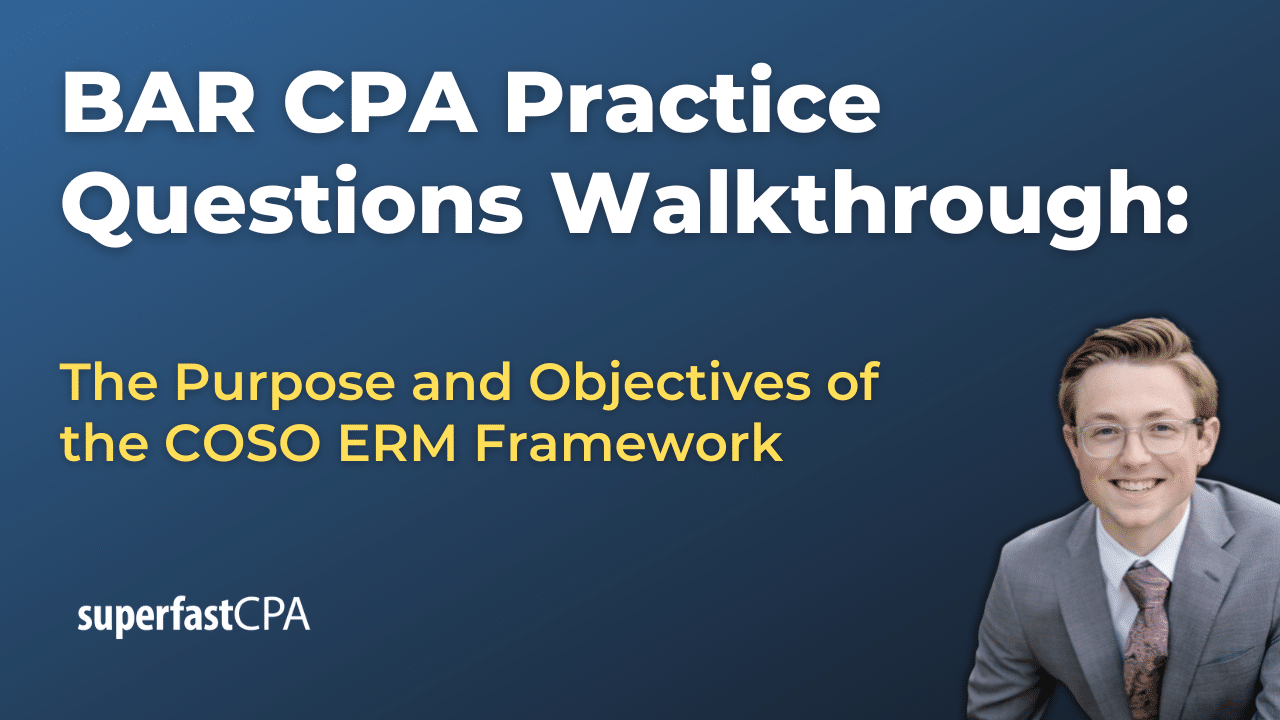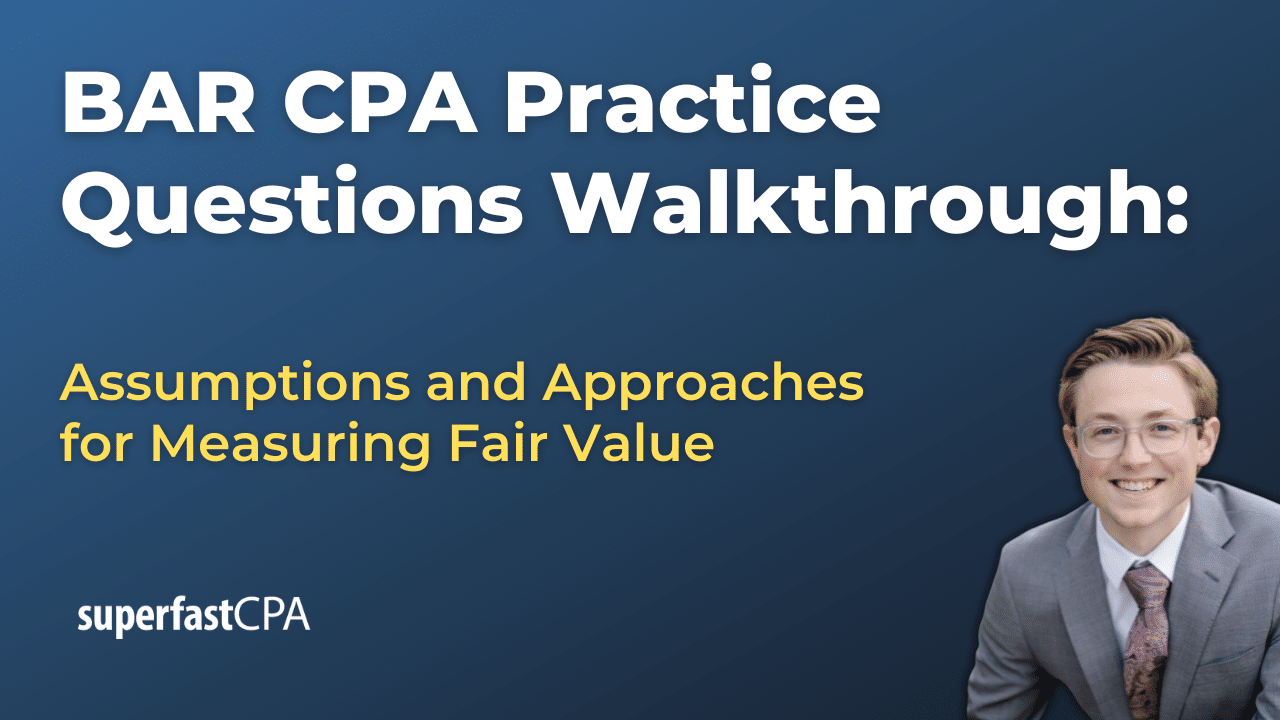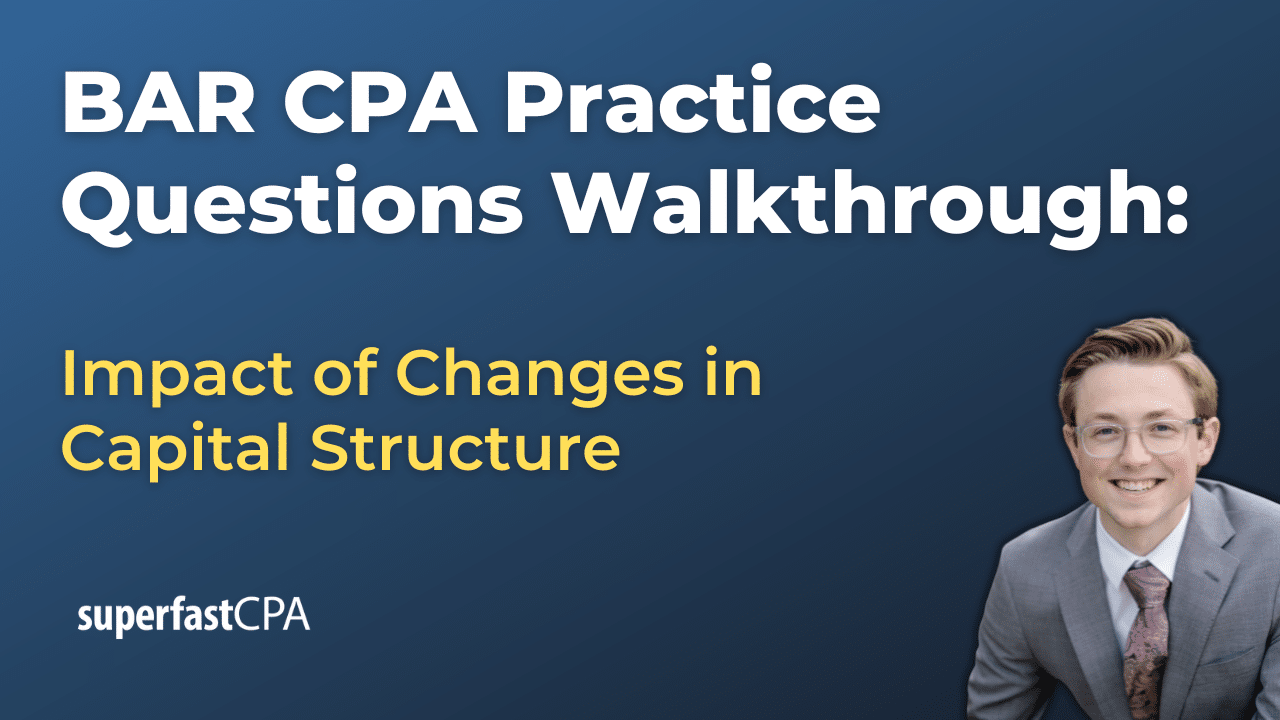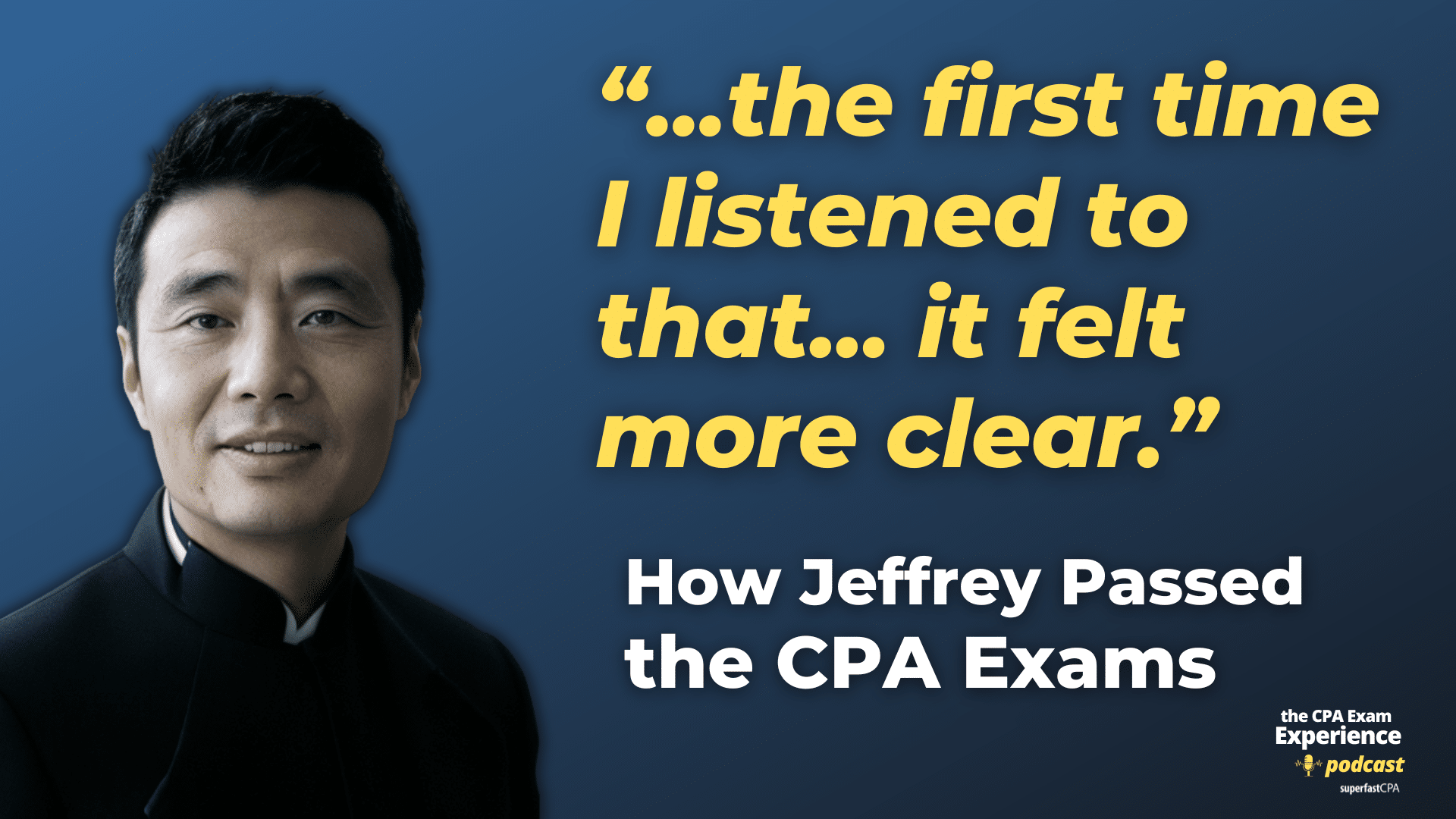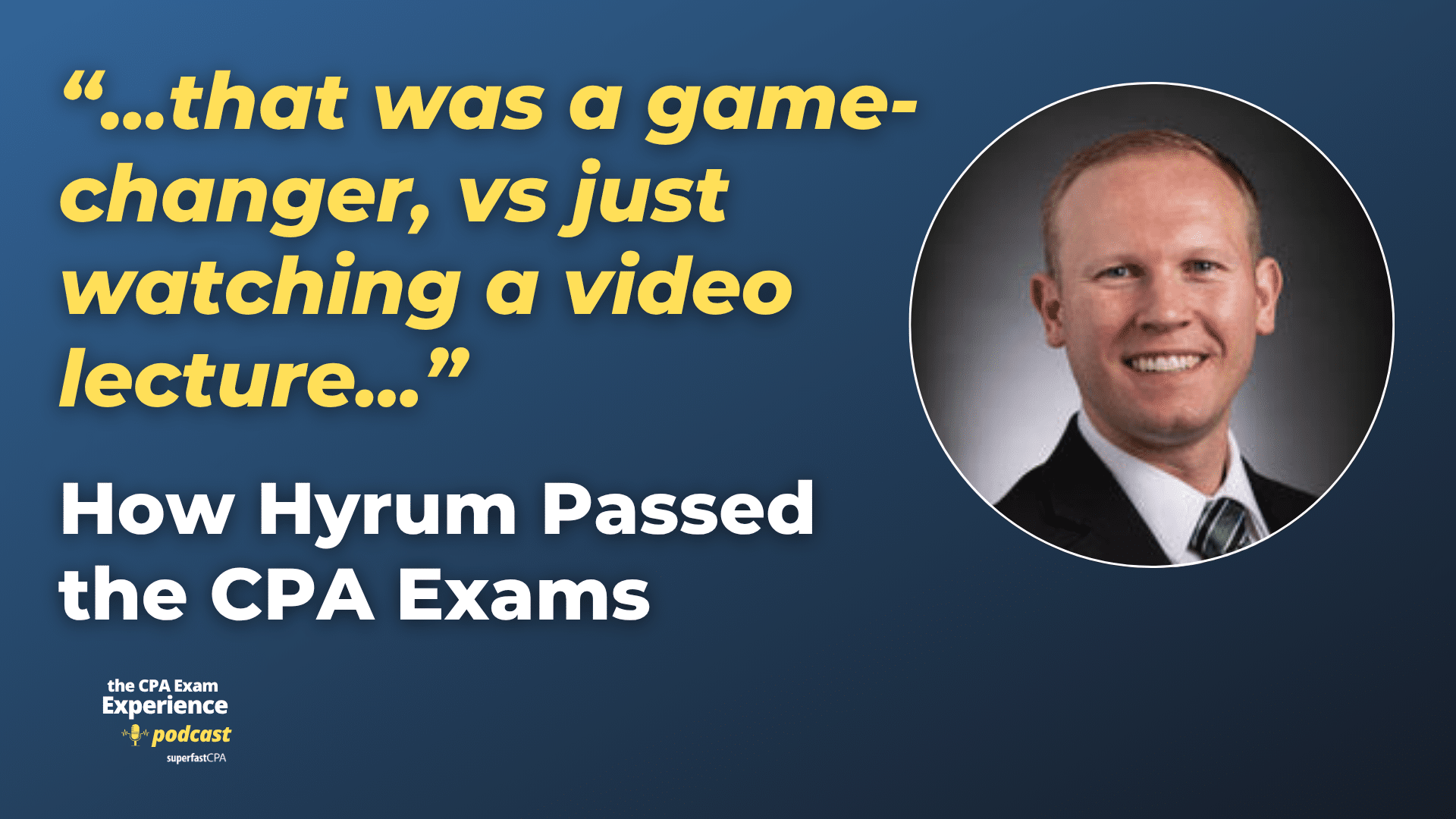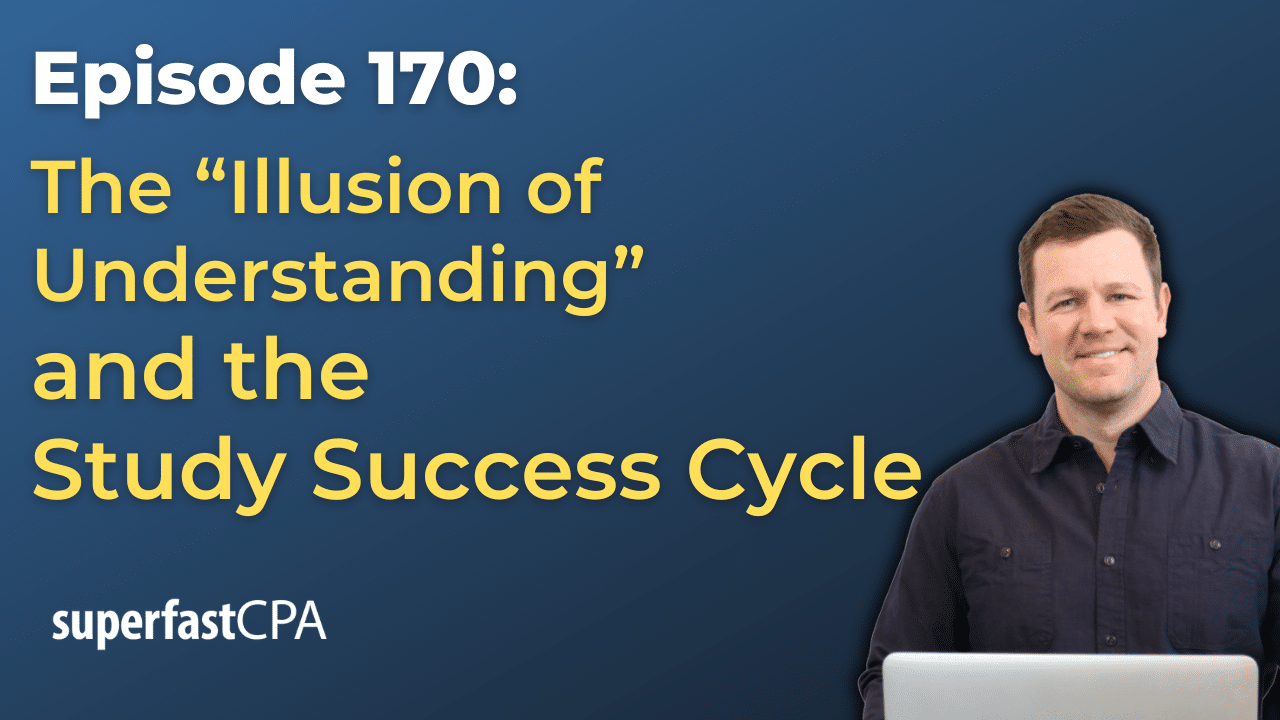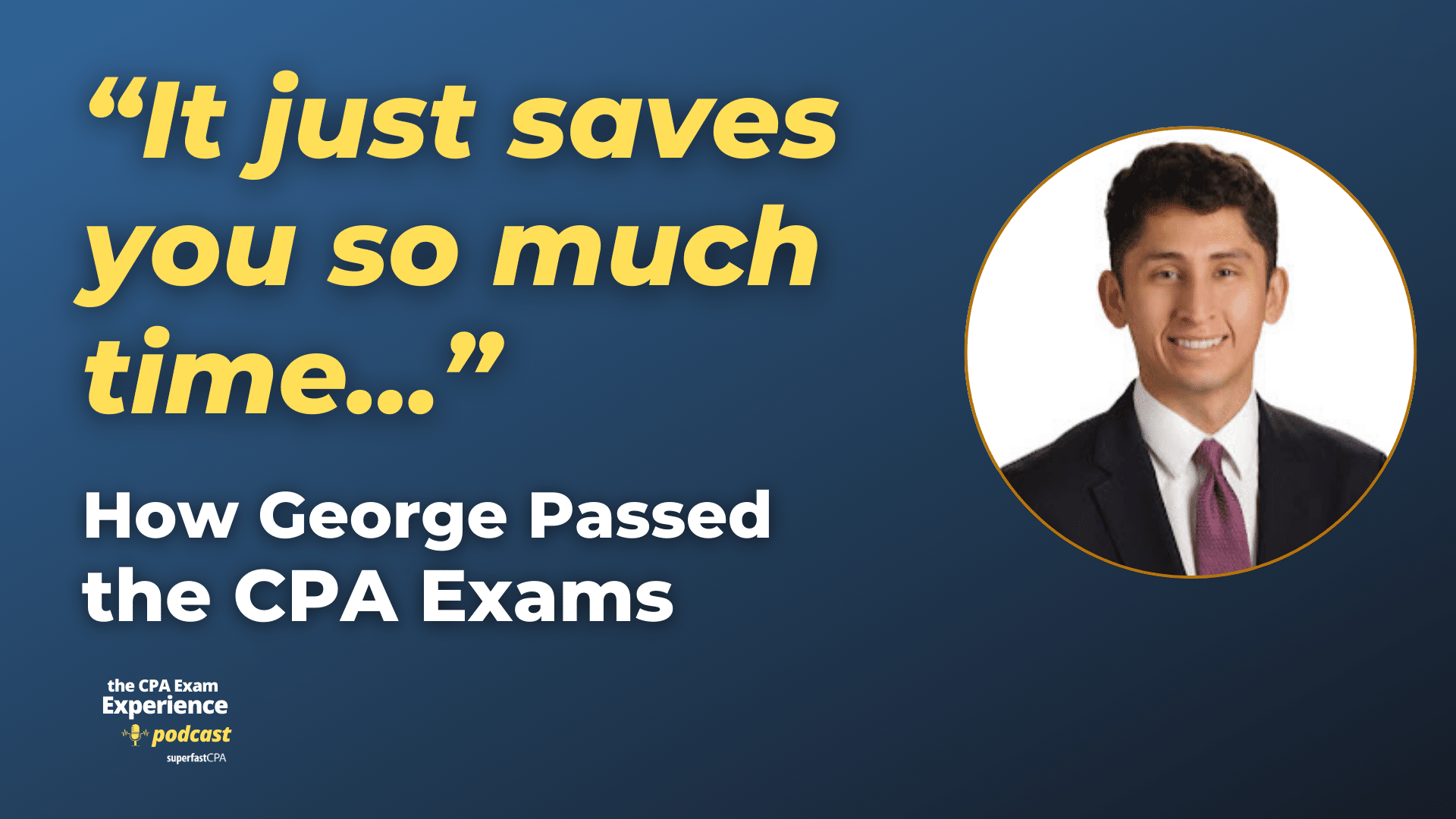In this video, we walk through 5 FAR practice teaching about preparing a classified balance sheet from a trial balance. These questions are from FAR content area 1 on the AICPA CPA exam blueprints: Financial Reporting.
The best way to use this video is to pause each time we get to a new question in the video, and then make your own attempt at the question before watching us go through it.
Also be sure to watch one of our free webinars on the 6 “key ingredients” to an extremely effective & efficient CPA study process here…
Preparing a Classified Balance Sheet from a Trial Balance and Supporting Documentation
A classified balance sheet is a detailed financial statement that groups a company’s assets, liabilities, and equity into specific subcategories for clearer financial reporting. This format provides more detailed information to stakeholders, helping them understand the company’s financial health and liquidity.
Here’s a step-by-step guide on how to prepare a classified balance sheet from a trial balance and supporting documentation:
Step 1: Understanding the Trial Balance
A trial balance lists all the accounts in the general ledger with their respective debit or credit balances. It ensures that total debits equal total credits, indicating that the books are in balance.
Example Trial Balance:
| Account | Debit ($) | Credit ($) |
|---|---|---|
| Cash | 80,000 | |
| Accounts Receivable | 120,000 | |
| Inventory | 200,000 | |
| Prepaid Insurance | 15,000 | |
| Equipment | 350,000 | |
| Accumulated Depreciation – Equipment | 100,000 | |
| Land | 500,000 | |
| Patents | 70,000 | |
| Accounts Payable | 55,000 | |
| Salaries Payable | 25,000 | |
| Notes Payable (due in 2 years) | 90,000 | |
| Mortgage Payable (due in 15 years) | 300,000 | |
| Common Stock | 450,000 | |
| Retained Earnings | 315,000 | |
| Total | 1,335,000 | 1,335,000 |
Step 2: Classify Assets
Assets are classified into current and non-current assets. Current assets are expected to be converted into cash or used up within one year or the operating cycle, whichever is longer. Non-current assets are those not expected to be converted into cash or used up within one year.
Current Assets:
- Cash: Liquid assets available for immediate use.
- Accounts Receivable: Amounts due from customers for credit sales.
- Inventory: Goods available for sale.
- Prepaid Insurance: Payments made in advance for insurance coverage.
Example Calculation:
- Cash: $80,000
- Accounts Receivable: $120,000
- Inventory: $200,000
- Prepaid Insurance: $15,000
Total Current Assets = $80,000 + $120,000 + $200,000 + $15,000 = $415,000
Non-Current Assets:
- Equipment (net of Accumulated Depreciation): Long-term assets used in operations, net of depreciation.
- Land: Long-term real estate holdings.
- Patents: Intangible assets representing exclusive rights.
Example Calculation:
- Equipment: $350,000
- Accumulated Depreciation: $100,000
- Net Equipment: $350,000 – $100,000 = $250,000
- Land: $500,000
- Patents: $70,000
Total Non-Current Assets = $250,000 + $500,000 + $70,000 = $820,000
Step 3: Classify Liabilities
Liabilities are classified into current and non-current liabilities. Current liabilities are obligations expected to be settled within one year. Non-current liabilities are those due beyond one year.
Current Liabilities:
- Accounts Payable: Amounts owed to suppliers.
- Salaries Payable: Wages owed to employees.
- Notes Payable (short-term): Short-term borrowing.
Example Calculation:
- Accounts Payable: $55,000
- Salaries Payable: $25,000
Total Current Liabilities = $55,000 + $25,000 = $80,000
Non-Current Liabilities:
- Notes Payable (long-term): Borrowing due in more than one year.
- Mortgage Payable: Long-term debt secured by property.
Example Calculation:
- Notes Payable: $90,000
- Mortgage Payable: $300,000
Total Non-Current Liabilities = $90,000 + $300,000 = $390,000
Step 4: Calculate Equity
Equity represents the owners’ residual interest in the company’s assets after deducting liabilities. It includes common stock, additional paid-in capital, and retained earnings.
Equity:
- Common Stock: Par value of stock issued.
- Retained Earnings: Cumulative net income not distributed as dividends.
Example Calculation:
- Common Stock: $450,000
- Retained Earnings: $315,000
Total Equity = $450,000 + $315,000 = $765,000
Step 5: Prepare the Classified Balance Sheet
With all components classified, compile the classified balance sheet.
Horizon Innovations Classified Balance Sheet As of December 31, Year 5
Assets
- Current Assets
- Cash: $80,000
- Accounts Receivable: $120,000
- Inventory: $200,000
- Prepaid Insurance: $15,000
- Total Current Assets: $415,000
- Non-Current Assets
- Equipment (net): $250,000
- Land: $500,000
- Patents: $70,000
- Total Non-Current Assets: $820,000
- Total Assets: $1,235,000
Liabilities and Equity
- Current Liabilities
- Accounts Payable: $55,000
- Salaries Payable: $25,000
- Total Current Liabilities: $80,000
- Non-Current Liabilities
- Notes Payable: $90,000
- Mortgage Payable: $300,000
- Total Non-Current Liabilities: $390,000
- Total Liabilities: $470,000
- Equity
- Common Stock: $450,000
- Retained Earnings: $315,000
- Total Equity: $765,000
- Total Liabilities and Equity: $1,235,000
Conclusion
Preparing a classified balance sheet involves categorizing assets and liabilities into current and non-current sections, and calculating equity from common stock and retained earnings. By following these steps and using supporting documentation, you can accurately present the financial position of a company in a clear and detailed manner. This approach provides stakeholders with the necessary information to make informed decisions about the company’s financial health.

